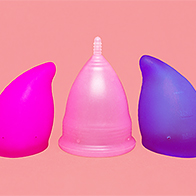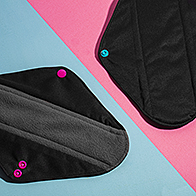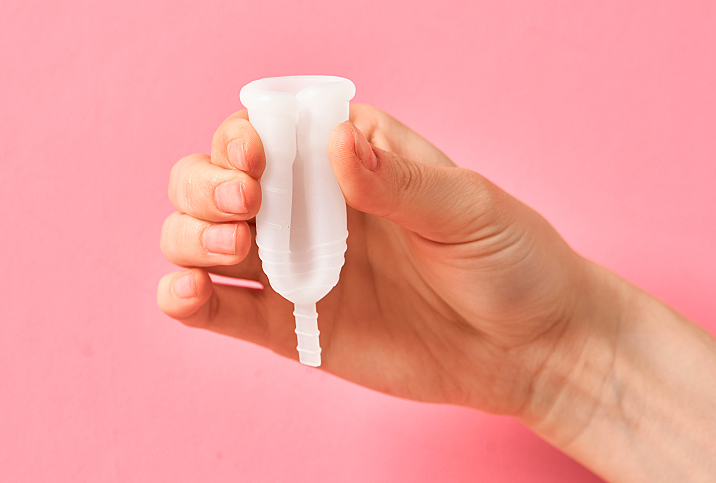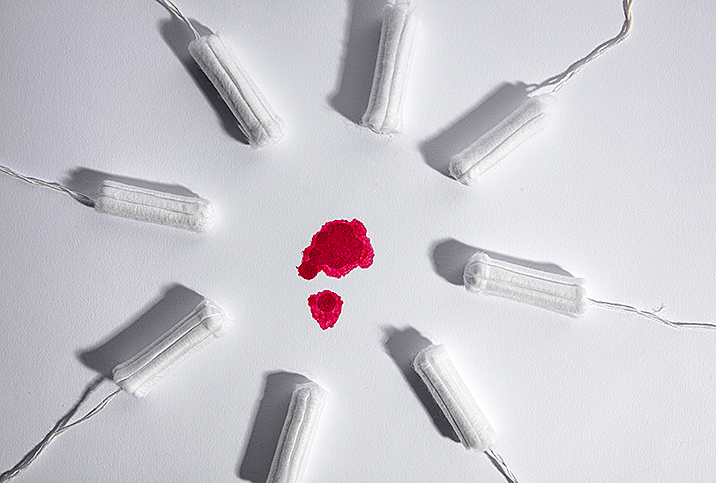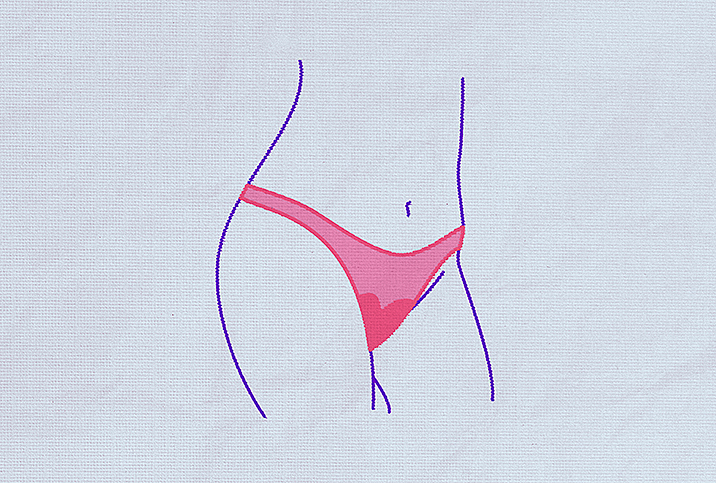Keep Your Vagina—and the Planet—Happy with Biodegradable Products
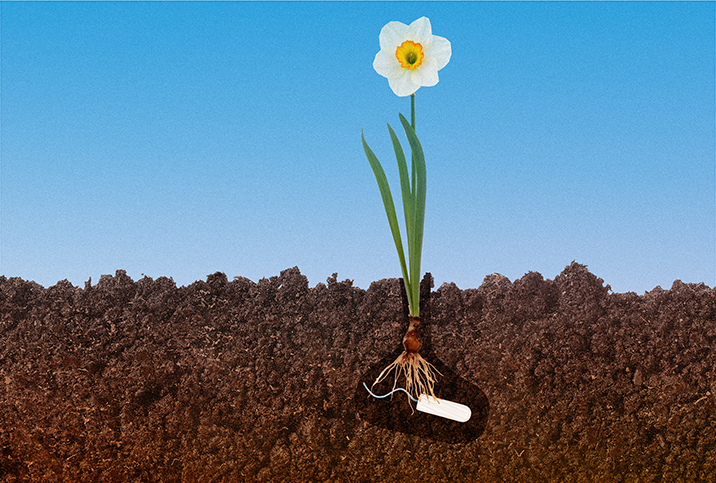
Biodegradable period products are the next big thing for menstruators who want to go green while also using reliable products that can manage their flow. Thankfully, from period panties to organic cotton tampons, biodegradable period products are readily available.
What exactly makes a product "biodegradable"?
If a product is biodegradable, it's compostable, but a compostable product isn't necessarily biodegradable.
A biodegradable item is made with materials that break down naturally as the original composition degrades into biomass, carbon dioxide, water and so on. Most biodegradable products don't naturally biodegrade quickly so they need to be composted—often through commercial composters and not residential composters.
Why go green?
Reusable biodegradable period products, such as period cups and panties, can be safely worn for up to 12 hours and reused over and over again, creating less waste going to landfills.
"I recommend biodegradable period products to patients. We have too much plastic in our bodies, oceans, streams and rivers," said Jane Van Dis, M.D., an assistant professor in the department of obstetrics and gynecology at the University of Rochester Medical Center in New York.
Tampon Tribe is a female, LGBTQ+ and Latinx-owned period brand that is 100 percent plastic-free and biodegradable.
"We have zero added materials. The pads and liners are wrapped in potato-starch film," explained Jennifer Eden, co-founder and CEO of the Santa Monica, California-based company. The brand's period panties are made from organic cotton and modal bamboo, which are also biodegradable.
A tampon user goes through about 11,000 in their lifetime. That means 11,000 plastic applicators and 11,000 plastic wrappers.
Eden launched Tampon Tribe after noticing plastic tampon applicators on beaches in Los Angeles.
"I thought there has to be a solution," Eden said. "Being biodegradable is core to our mission. Period products are one of the largest polluters on the planet; it's the least we can do to make a difference."
A tampon user goes through about 11,000 in their lifetime, according to the Campaign for Safe Cosmetics. That means 11,000 plastic applicators and 11,000 plastic wrappers. The 2004 International Coastal Cleanup report from the Ocean Conservatory states that 17,909 tampons were removed that year from the shoreline and ocean. While more research is needed on the environmental impact of period products, we know the amount of plastic waste is substantial.
In addition to the environmental benefits of avoiding plastic in traditional period products, there are benefits for your own health, as well. Many biodegradeable period products use medical-grade materials, are hypoallergenic and are made without bisphenol A (BPA), an industrial chemical used in plastic production.
"While biodegradable period products are better environmentally and for overall health, they must be 100 percent organic cotton with a 100 percent organic cotton safety layer. Without the layer, organic cotton products can shed inside of the vagina and cause irritation like plastic tampons," advised Gunvor Ekman-Ordeberg, M.D., an OB-GYN and co-founder of DeoDoc Swedish Intimate Skin Care, headquartered in Stockholm.
Finding biodegradable products
Fortunately, the biodegradable period product market is growing. Many eco-friendly options, including tampons, liners, pads, panties and cups, are available. Prices vary depending on the brand, but many are comparable to those of traditional period products.
You can find reusable and single-use period panties in various absorbencies. Biodegradable period cups are available in several sizes. Want a biodegradable pad you can flush down the toilet? That exists, too. The options are abundant.
Modibodi recently released reusable biodegradable briefs.
"The underwear are scientifically proven to have 97 percent of its components break down at the end of their usable life, with most of the underpant materials decomposing within six months when buried in active soil," said Kristy Chong, founder and CEO of the Balmain, Australia-based brand.
When you're ready to biodegrade the product, cut and throw away the elastics, then bury the brief in soil full of natural bugs and bacteria or microorganisms.
Femi Secrets has the Pretty Panty, which is made from biodegradable material and can be worn for eight hours. Flex Fits has Biodegradable Wipes. Organic Initiative's tampons, pads and liners are made from biodegradable, organic cotton. Here We Flo has a vegan subscription box of organic cotton tampons with or without sugarcane applicators, bamboo pads and bamboo liners, all packaged in compostable wrappers.
Viv offers biodegradable, 100 percent plastic-free bamboo-fiber panty liners and pads.
"Our products save the equivalent of 48 plastic bags per period," stated Katie Diasti, founder and CEO of the Boston-based company. "Our pads break down in 150 days and have compostable wrappers that can be thrown away in a compost bin. They're made from cornstarch and will break down easily."
When Diasti started Viv, she was shocked to learn that one pad is equivalent to four plastic bags of waste and takes 500 to 800 years to break down.
"I dove into fibers that reduced agro waste and performed better than cotton. Bamboo was the perfect alternative for the core material of Viv pads," she explained. "By choosing bamboo and corn fiber, we are able to reduce land, water and fertilizer usage."
Do these products work for everyone?
The materials used are safe for vulvas and vaginas because they are generally 100 percent cotton or 100 percent bamboo. Van Dis emphasized the importance of reading labels, noting that people who have an allergy to any component in the biodegradable item should avoid that product.
"Cotton is the cleanest, most breathable material for both the vagina and vulva," Ekman-Ordeberg said. "Twenty percent of our patients visit due to irritation from menstrual care products. We recommend biodegradable products to our patients as long as they are 100 percent organic cotton."







